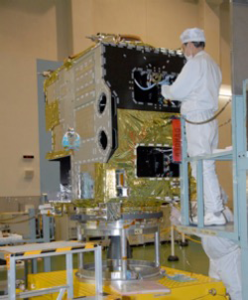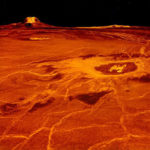Featured News
Archives »
News Highlights
Gravity Assist Podcast, Venus with David Grinspoon
David Grinspoon : [11.29.2017]
Russia to Draft Program to Launch Space Probe to Venus
Russian News Agency : [11.27.2017]
Two Cameras on Akatsuki Pause Observations
ISAS : [03.03.2017]
JAXA decides that two of five cameras on-board Akatsuki (1-µm and 2-µm cameras) pause scientific observations. Other cameras (longwave-infrared camera, ultraviolet imager, and lightning and airglow camera) continue normal operation.
Featured Articles
Could Dark Streaks in Venus’ Clouds be Microbial Life?
Keith Cooper : [01.05.2017]
The question of life on Venus, of all places, is intriguing enough that a team of U.S. and Russian scientists working on a proposal for a new mission to the second planet — named Venera-D — are considering including the search for life in its mission goals. If all goes as planned, an unmanned aerial vehicle could… View Full Story »
Live from Sagamihara: Akatsuki Orbit Insertion Success!
Sanjay Limaye : [12.07.2015]
More than 50 people showed up from as far away as Scuba as well as Sagamihara for the public viewing through telescopes set up in the ISAS compounds. Now the viewing is at the nearby museum which has a telescope. Quite a few people at the viewing session… View Full Story »
Featured Story
Back from the brink: Akatsuki returns to Venus
Ralph Lorenz : [09.08.2015]
Perhaps forgotten by the general public in the West, a long-lost spacecraft is set to enter orbit around our sister planet in December, picking up where ESA’s Venus Express left off when its operations ended last year. This is Akatsuki, which the Japan Aerospace Exploration Agency (JAXA) has carefully nursed in space after it failed its first attempt at orbital insertion in 2010.
 This compact spacecraft was developed by JAXA to observe Venus from orbit with a set of innovative cameras to monitor its climate, weather, and surface. Unfortunately, Akatsuki’s arrival did not go as planned. Orbit insertion is a tense moment for operators of planetary spacecraft. This crucial operation marks the end of a usually quiet cruise, and the busy transition to operations around the target planet and, hopefully, to routine scientific observations. While usually taken somewhat for granted, it poses mechanical and thermal stresses on vehicle components and makes unforgiving demands on attitude and timing. Usually there is only one chance to get it right.
This compact spacecraft was developed by JAXA to observe Venus from orbit with a set of innovative cameras to monitor its climate, weather, and surface. Unfortunately, Akatsuki’s arrival did not go as planned. Orbit insertion is a tense moment for operators of planetary spacecraft. This crucial operation marks the end of a usually quiet cruise, and the busy transition to operations around the target planet and, hopefully, to routine scientific observations. While usually taken somewhat for granted, it poses mechanical and thermal stresses on vehicle components and makes unforgiving demands on attitude and timing. Usually there is only one chance to get it right.
Spacecraft have recovered from failed insertion burns before, albeit rarely. The arrival burn of NASA’s Near Earth Asteroid Rendezvous (NEAR-Shoemaker) spacecraft in 1998 was cut short by an unfiltered accelerometer reading, but the spacecraft was retargeted to make a second attempt, a process made somewhat forgiving by the low gravity of the target body Eros. On the other hand, Mars Observer in 1993 was never heard from again after it was due to fire its engine for Mars arrival. Mars Climate Orbiter in 1999 famously arrived at too low an altitude due to a navigation error, burning up in the Mars atmosphere.







